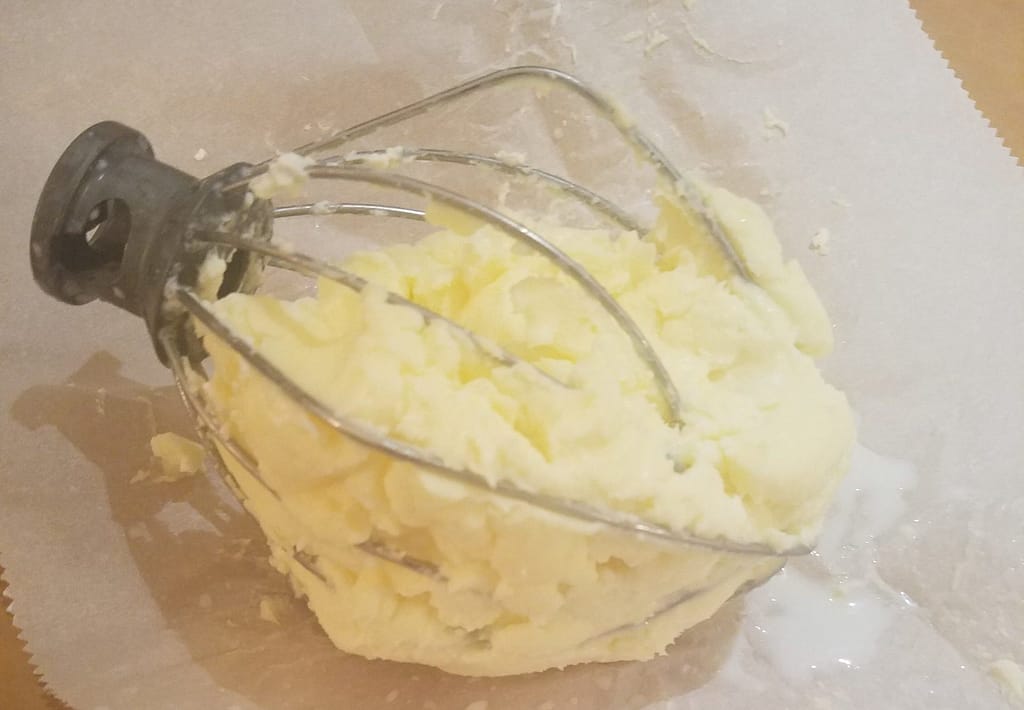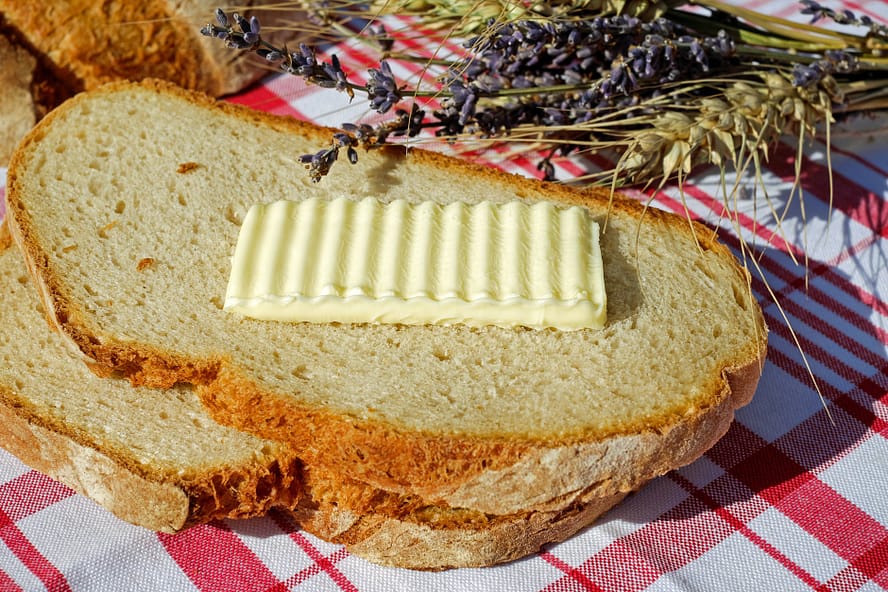In the Spring the world is being reborn and new life is all around us. Brigid is associated with these young lives, and with the young animals of spring also comes their mothers’ milk. Butter and cheese are made with the surplus milk that is available in the spring. Fresh butter and bread is a staple of Imbolc in my home.
Butter is actually incredibly simple to make and only takes 10 to 15 minutes. A pint of cream makes about 5 or 6 ounces of butter and will leave you with a good cupful of buttermilk for making bread recipes. You will need some thick cream, double cream, or whipping cream—leave it out at room temperature for an hour. Room temperature should be between 50° F to 70° F, or between 10° C and 22° C. The warmer the room temperature is, the quicker the butter will form, but do not try to slightly heat up your cream in a saucepan or microwave because it will alter the cream’s consistency.
There are two ways to make butter from room-temperature cream. The quick way is to use a mixer or a food processor with a whisk attachment. Pour the cream into the mixer bowl, set the whisk to medium or medium high, and let it whisk for 5 to 7 minutes. Make sure the whisk and bowl are covered. If the appliance does not have a cover, place a cloth over it to keep it from splattering all over the kitchen. I have a cover, but I also cover my mixer with plastic wrap to prevent more splatter.

As it is whisked, you will see the butter separate from the buttermilk, curds, and whey. You will definitely know when it’s done if you keep a good watch.
The slow, but more traditional, way is to pour your room-temperature cream into a large clean jar, seal it tight, and then vigorously shake it. After 3 or 4 minutes the cream turns thicker and heavier and becomes a little harder to shake. After 6 minutes it may seem nothing is moving, and then after 7 or 8 minutes the buttermilk starts to separate; after about 10 minutes, the butter and buttermilk will be completely separated, and you’ll have gotten a good arm workout too! This task was often given to children—they would roll the jar or cream to each other as a game until the curds and whey separated.
Next:
• Pour your contents from the mixing bowl or jar into a fairly fine strainer sieve over a container to collect the buttermilk.
• Set aside the buttermilk for recipe use.
• Over your sink, rinse the butter curds with a jug of filtered water.

On a clean cutting board, use a spatula (preferably two spatulas; wooden ones work best) to stir, pat, and bind the curds into a block of butter. If you are going to salt your butter, this is the time to add it, but I like to keep mine unsalted for taste, heart care, and easier salt measurement in recipes. This patting and binding only takes a couple of minutes.
Then you can wrap your butter in grease-proof paper and put it into an airtight storage container. This is perfect for use at Imbolc, and now you have buttermilk for making bread, too!


